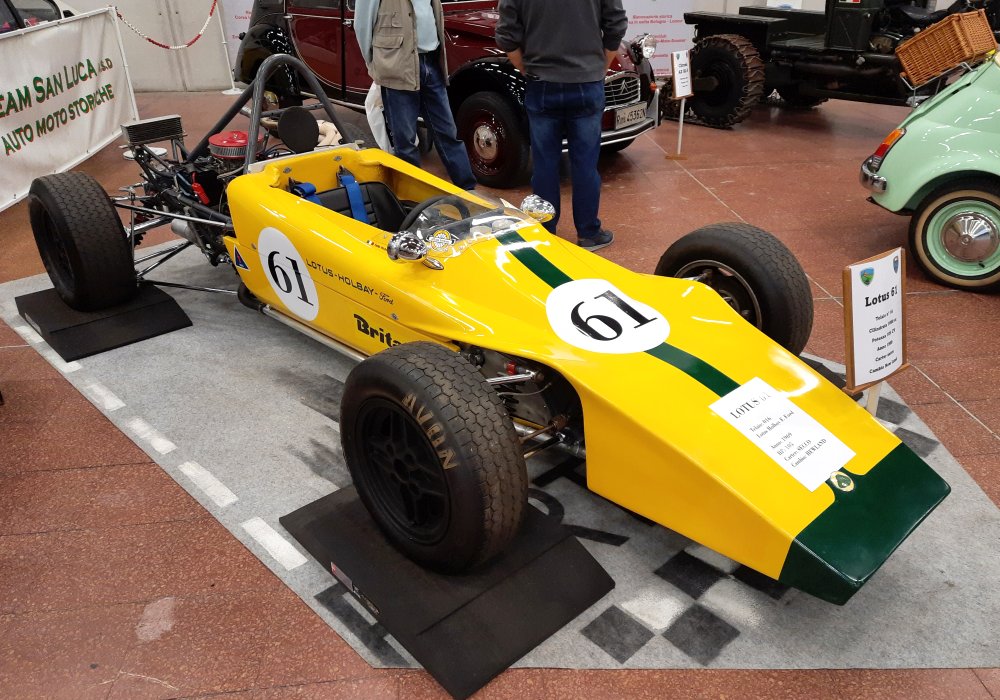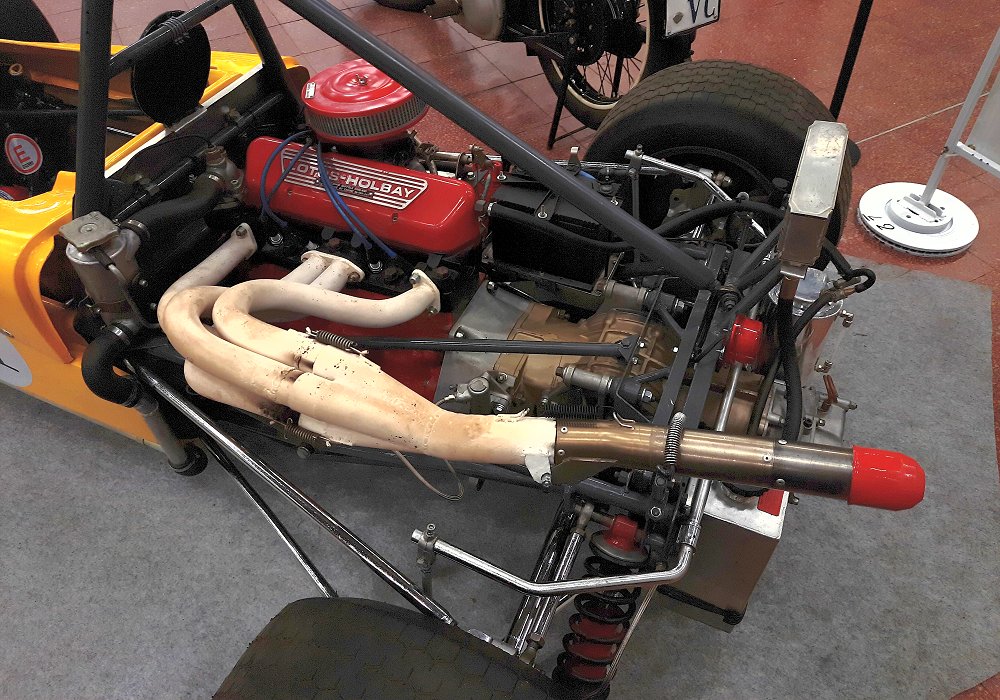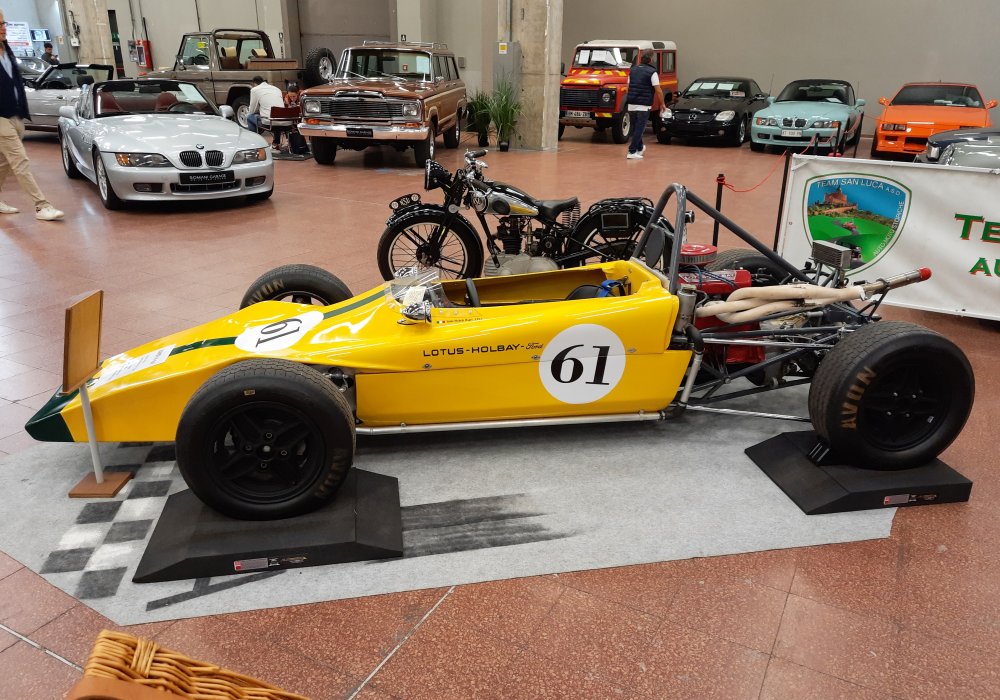Description
The Lotus 61, introduced in 1969, was Lotus’s second-generation Formula Ford car and the successor to the highly successful Lotus 51. While the 51 had been elegant and rounded in the classic mid-1960s style, the Lotus 61 moved the company firmly into a new design era. Its sharp, angular bodywork, revised chassis, and improved aerodynamics reflected the growing influence of modern Formula 3 and Formula 2 designs, and it quickly became one of the most competitive and recognisable cars in the rapidly expanding Formula Ford category.
The Lotus 61 was still built around a tubular steel spaceframe chassis, but it was redesigned for greater stiffness and more predictable handling. The frame was stronger than that of the 51, with revised triangulation and reinforced suspension pickup points. The cockpit was widened slightly to give the driver more space, while still keeping the frontal area low. Lotus aimed to create a car that was not just fast, but also suitable for both beginners and experienced drivers who wanted a machine that could be tuned precisely and driven hard without upsetting its balance.
Power came from the same Ford 1600 Kent crossflow engine mandated by Formula Ford regulations. These units were typically tuned to produce around 105 horsepower, which, combined with the Lotus 61’s weight of roughly 420 kilograms, ensured lively performance. Acceleration was vivid, the power delivery was smooth and tractable, and the car reached top speeds of around 125 mph on longer circuits. The engine was mounted longitudinally behind the driver and paired with a four-speed Hewland Mk8 or Mk9 gearbox depending on customer preference.
The suspension layout followed familiar Lotus practice. At the front, unequal-length double wishbones with coil springs and dampers provided sharp steering response and a stable platform under braking. The rear used lower wishbones, twin radius arms, and coil-over dampers with geometry tuned for progressive breakaway and controllable oversteer. The 61 was engineered to be forgiving enough for novice drivers but sharp enough to satisfy skilled racers. Steering was unassisted and very direct, offering excellent feedback, while braking systems typically used front discs and rear drums depending on specification.
The most distinctive aspect of the Lotus 61 was its bodywork. Designed by Dave Baldwin, it was angular, wedge-influenced, and unmistakably modern for the late 1960s. The tall sidepods, flat flanks, squared-off engine cover, and sharp nosecone gave the car a visual link to Formula 2 and Formula 3 machines of the era. The revised aerodynamics reduced drag and improved stability at speed, and the car’s new shape brought it visually closer to the contemporary open-wheel designs emerging across motorsport. For many young drivers of the time, the 61 looked like a “mini Formula One car,” adding to its appeal.
On track, the 61 proved successful and competitive. It had more grip and stability than the earlier 51, especially in fast corners, and its reinforced structure made it robust enough for school use. Racing schools such as Jim Russell and Motor Racing Stables used large fleets of 61s, training hundreds of future racers. The car also saw widespread use in private hands, with drivers campaigning it in national Formula Ford championships across the UK, Europe, and North America.
Lotus later introduced the 61M, a modified version with cleaner bodywork, a lower engine cover, and improved aerodynamics. The 61M became the preferred version for serious privateers and carried the model’s competitiveness well into the early 1970s.
The Lotus 61 was eventually replaced by the Lotus 69 in 1971, but it remained active in competition for many years thanks to its durability, strong chassis, and ease of maintenance. Around 250 Lotus 61s and 61Ms were produced, making it one of the most numerous early Formula Fords.
Today, the Lotus 61 is remembered as a major step forward in the development of Formula Ford and an important milestone in Lotus’s single-seater lineage. It combined affordability with sophisticated handling, modern aerodynamics, and a strong, tunable chassis. It was also one of the cars most responsible for shaping the careers of an entire generation of racing drivers during the late 1960s and early 1970s. Light, responsive, and striking in appearance, the Lotus 61 remains a sought-after machine in historic Formula Ford racing and a timeless example of Colin Chapman’s commitment to clever, efficient, and driver-focused engineering.



